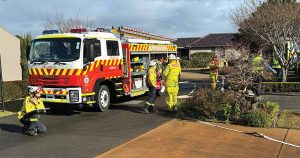
Clr Dr Mila Kasby – Greens Councillor For The Hills Shire
I grew up hearing the catchphrase “roads, rates and rubbish” but now realise it’s a seriously outdated description of the vast number of facilities and services that councils actually deliver. Our parks and sports grounds, pools, libraries, childcare facilities, footpaths and cycleways, community venues and events are all ignored by this simple slogan. Nowadays, councils are increasingly being asked to do a lot more, with a lot less – and this is becoming challenging.
So, in a cost-of-living crisis, and a housing crisis, how much can councils do to address climate change? It turns out, a lot actually, and for those tempted to say “stick to your knitting” … hear me out.
Councils are already at the coalface, responding to climate change impacts. With recent flood, bushfire and heatwave events, NSW councils provided support, repaired damage (especially roads), collected disaster waste, and worked to keep communities safe and strengthen their resilience.
It’s not surprising that severe weather events have made rapidly lowering greenhouse emissions an urgent goal for councils. Many, including our neighbours in Hornsby and Hawkesbury have already committed to net zero targets and developed strategies to reduce emissions, adapt to climate change impacts and prepare their communities for future climate-fuelled disasters.
What councils do matters. How they invest and spend ratepayers’ money sends signals to the market. Councils can install solar on every rooftop they own and choose to buy clean renewable energy to cover the shortfall. They can maximise energy efficiency and reduce consumption costs by changing streetlights to LED, insulating buildings, and electrifying their appliances, equipment, and vehicles.
They can encourage carbon positive energy efficient buildings, smarter infrastructure, divert methane emitting food waste from landfill and use recycled materials in road construction. They can make it easier to use public transport and promote active transport (bikes, scooters, footpaths), increase shade and tree canopy cover, protect green space and biodiversity and support land regeneration projects.
They can design and build roads and other infrastructure to withstand future weather events (e.g. improved drainage systems to reduce flash flooding.) Beyond benefits to the community, actions like these create local jobs and result in long term savings for councils.
Next council meeting, I’ll be asking for a report into how The Hills Shire Council can commit to a net zero plan. This is fundamental to long term sustainability on every level -including financial.
The ideal time for acting on this has long gone and the sooner we act, the greater the benefit. Councils are key to addressing climate change impacts and we can’t continue to kick this can down the road.




